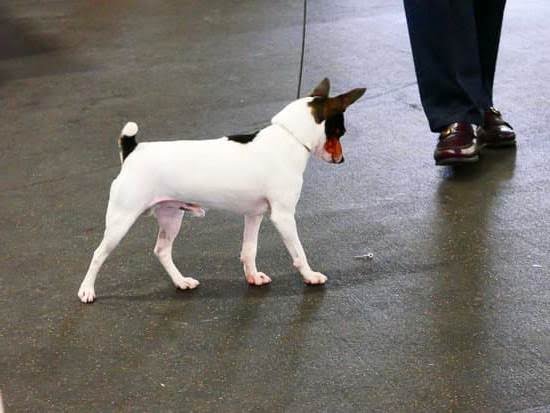Are you looking to teach your furry friend a new trick? In this article, we will explore the process of training your dog to give you a paw.
Whether you have a new puppy or an adult dog, teaching them to offer their paw on command can be a fun and rewarding experience for both you and your canine companion. From understanding the importance of paw training to troubleshooting common challenges, this guide will provide you with the necessary steps to successfully train your dog to give you a paw.
Training your dog to give you a paw is not just about teaching them a cute trick – it also helps strengthen the bond between you and your pet. This simple act of offering their paw on command demonstrates trust, communication, and cooperation between you and your dog. Additionally, paw training can also serve as mental stimulation for your pet, keeping their mind active and engaged.
Before diving into the training process, it’s important to prepare yourself with the right knowledge and tools. Understanding essential commands that are prerequisites for paw training and having the right mindset for consistency are key elements in successfully teaching this trick.
With the step-by-step guide and troubleshooting tips provided in this article, you’ll be well-equipped to tackle any challenges that may arise during the training process. So let’s get started on this exciting journey of teaching your dog how to give you a paw.
Understanding the Importance of Paw Training
Training your dog to give you a paw may seem like just a cute trick, but it actually serves several important purposes in your pet’s overall development and behavior. Understanding the significance of paw training can help motivate you as a pet owner to invest time and effort into this particular skill.
Building Trust and Bonding
Teaching your dog to give you a paw involves physical touch, which can help strengthen the bond between you and your furry friend. By practicing this command, you are establishing trust and communication with your dog, ultimately deepening your relationship.
Enhancing Obedience and Discipline
Paw training is also an opportunity for your dog to practice listening to and following your commands. Learning to offer their paw on cue helps reinforce obedience and discipline, teaching them that certain behaviors result in positive reinforcement or rewards.
Improving Coordination and Mental Stimulation
From a physical standpoint, paw training can also improve your dog’s coordination as they learn to lift and offer their paw upon request. Additionally, the mental stimulation involved in learning new commands contributes to their overall cognitive development, keeping their mind sharp and engaged.
By understanding the importance of paw training, you can approach this skill with purpose and dedication, knowing that it benefits both you and your beloved pet in various ways.
Getting Started
Before delving into paw training, it’s crucial to ensure that your dog is in the right mindset and environment for learning. The first step in preparing for paw training is to make sure that your dog is well-rested and has had some exercise before the training session. A tired or hyperactive dog may not be receptive to learning a new command.
Additionally, gather some tasty treats that your dog enjoys as positive reinforcement during training. Small, bite-sized treats are ideal for this purpose. You’ll also need a quiet and distraction-free area to conduct the training sessions, as this will help your dog focus on the task at hand.
Another important aspect of preparing for paw training is to establish a strong bond with your pet. Positive interaction and affection between you and your dog will make them more eager to learn new commands such as giving a paw.
| Factor | Importance |
|---|---|
| Physical State of Your Dog | Crucial for receptiveness to learning |
| Treats | Key tool for positive reinforcement during training |
| Training Environment | Allows for focus and attention from your dog |
| Bonding with Your Dog | Makes them more receptive to learning new commands |
Essential Commands to Teach Your Dog Before Starting Paw Training
Before you start training your dog to give you a paw, it’s vital to ensure that they have mastered some essential commands. These commands will form the foundation for your dog’s understanding of obedience and will make it easier for them to learn new tricks, such as giving a paw. Here are some essential commands to teach your dog before starting paw training:
- Sit: Teaching your dog to sit on command is one of the fundamental behaviors that will help in paw training. This command sets the stage for other tricks and provides a starting point for teaching them to raise their paw.
- Stay: The “stay” command is crucial for maintaining control over your dog while training them. It teaches them patience and self-discipline, which are essential when teaching more advanced tricks like giving a paw.
- Come: Training your dog to come when called is important not only for their safety but also for effective communication during training sessions. Having a reliable recall will make it easier to guide your dog through the steps of learning how to give you a paw.
Once your dog has mastered these basic commands, they will be better equipped to understand and follow the steps involved in giving you a paw. Patience and consistency in teaching these foundational commands will set the stage for successful paw training sessions. Remember that every dog learns at their own pace, so be sure to tailor your approach based on your pet’s individual learning style.
Practicing these essential commands regularly can help reinforce good behavior and establish a positive relationship between you and your dog. With these foundational skills in place, you’ll be well-prepared to move on to more advanced training techniques and teach your furry friend how to give you a paw on command.
Step-by-Step Guide to Teaching Your Dog to Give You a Paw
When it comes to training your dog to give you a paw, consistency and patience are key. This is a fun and relatively easy trick to teach your furry friend, but it does require time and practice. The “paw” command can also serve as a foundation for more advanced tricks in the future.
To start, make sure your dog is already familiar with basic commands such as “sit” and “stay,” as these will be helpful in the paw training process. It’s also important to have some tasty treats on hand to use as positive reinforcement during the training sessions.
The first step in teaching your dog to give you a paw is to have them sit in front of you. Once they are sitting calmly, hold a treat in your hand just above their nose. As they become interested in the treat, slowly move your hand down towards their paw. When they lift their paw to reach for the treat, say “paw” and immediately reward them with the treat and praise.
Continue practicing this motion with your dog, gradually adding in the verbal command “paw” each time they lift their paw. Be patient and remember that every dog learns at their own pace. With consistent practice and positive reinforcement, your dog will eventually learn how to give you a paw on command.
| Training Step | Description |
|---|---|
| Step 1 | Have your dog sit in front of you and hold a treat just above their nose. |
| Step 2 | Slowly move your hand down towards their paw, encouraging them to lift it. |
| Step 3 | Add the verbal command “paw” when they lift their paw, then reward with a treat. |
Troubleshooting
Patience and Persistence
One common challenge in paw training is the lack of patience from both the dog and the owner. Some dogs may not immediately understand what is expected of them, while some owners may become frustrated when their pet doesn’t catch on right away.
It’s important to remember that every dog learns at their own pace, and it’s essential to be patient and persistent during the training process. Using positive reinforcement and consistent practice, your dog will eventually understand what you are asking of them.
Resistance From the Dog
Another challenge in paw training is when a dog shows resistance or reluctance to lift their paw. This could be due to fear or discomfort, especially if they’ve had their paws handled roughly in the past. To overcome this challenge, it’s important to create a safe and comfortable environment for your dog.
Start by gently touching their paw and rewarding them with treats and praise. Gradually build up to lifting their paw on command, always using positive reinforcement to create a positive association with the action.
Distractions and Lack of Focus
Some dogs may struggle with paw training due to distractions or a lack of focus. They may be more interested in exploring their surroundings or interacting with other stimuli rather than focusing on the task at hand. To overcome this challenge, it’s important to train in a quiet environment free from distractions at first.
Once your dog understands the command in a controlled setting, gradually introduce distractions while practicing the paw command. Be patient and consistent, rewarding your dog for maintaining focus even in distracting situations.
By addressing these common challenges with patience, understanding, and positive reinforcement, you can successfully overcome obstacles in paw training and enjoy watching your furry friend master this impressive trick.
Reinforcing the Paw Command
To ensure the success of training your dog to give you a paw, it is crucial to reinforce the paw command consistently. This will help your furry friend understand and remember the desired behavior, enabling them to perform it on cue. Consistency in reinforcement also strengthens the bond between you and your dog, leading to better communication and cooperation.
One effective way to reinforce the paw command is by using positive reinforcement techniques such as treats, praise, and affection. Whenever your dog successfully responds to the paw command by lifting their paw, immediately reward them with a treat and offer verbal praise.
This positive association will encourage your dog to repeat the desired behavior during future training sessions. Over time, as your dog becomes more proficient at giving you their paw, you can gradually reduce the frequency of treats while still providing verbal praise and affection as reinforcement.
In addition to positive reinforcement, consistency in practicing the paw command is essential for success. Set aside dedicated training sessions each day to work on this skill with your dog. Short, frequent sessions are more effective than lengthy ones, as they help prevent boredom and maintain your dog’s focus.
By consistently practicing the paw command in various environments and situations, you can help your dog generalize this behavior and respond reliably regardless of distractions or new settings. With patience and dedication, both you and your dog can achieve success in reinforcing the paw command through consistent training.
Advanced Techniques and Fun Variations of the Paw Command
After successfully teaching your dog the basic “paw” command, you can take their training to the next level by introducing advanced techniques and fun variations. These variations not only add excitement to your dog’s training but also help strengthen the bond between you and your furry friend. Here are some advanced techniques and fun variations to consider:
- Double Paw: Once your dog has mastered giving you one paw, you can challenge them to offer both paws on command. Simply use the cue “both paws” or “double paw” and gently lift their front legs off the ground, rewarding them when they comply.
- High Five: Teach your dog to give you a high five by holding your hand up and encouraging them to touch it with their paw. Use a verbal cue like “high five” or “give me five” and reward them for each successful attempt.
- Paw Targeting: Take paw training to the next level by teaching your dog to touch specific targets with their paw. You can use objects like a small target mat or even teach them to ring a bell with their paw.
- Paw Shake Sequence: Elevate the classic paw shake by creating a sequence of actions for your dog to perform before offering their paw. This could include sitting, staying, and then shaking paws in response to different cues.
Remember, consistency and positive reinforcement are key when introducing these advanced techniques and fun variations of the paw command. Always be patient with your dog as they learn these new skills, and make training sessions enjoyable for both of you.
By incorporating these advanced techniques and fun variations into your dog’s training repertoire, you’ll not only keep them mentally stimulated but also continue strengthening your relationship through positive interaction and bonding time.
Conclusion
In conclusion, successfully training your dog to give you a paw can be a rewarding and enjoyable experience for both you and your furry friend. By following the step-by-step guide and troubleshooting common challenges in paw training, you have equipped yourself with the knowledge and patience necessary to teach your dog this impressive trick. Celebrate your dog’s new skill and acknowledge the hard work and dedication that went into achieving it.
Furthermore, teaching your dog to give you a paw is just the beginning of what you can accomplish through obedience training. This accomplishment opens the door to further training opportunities, allowing you to bond with your dog even more as you continue to develop new skills together. Consider exploring advanced techniques and fun variations of the paw command, such as incorporating hand signals or introducing different surfaces for your dog to place their paw on.
Remember that consistency is key in reinforcing the paw command, so make sure to practice regularly with your dog. With patience, positive reinforcement, and dedication, you can continue to build on this foundation and expand your dog’s repertoire of tricks and commands. The bond between an owner and their dog is strengthened through effective training, so enjoy the process and cherish the moments spent working with your beloved pet.
Frequently Asked Questions
Why Won’t My Dog Give Me Her Paw?
There could be several reasons why your dog won’t give you her paw. It might be due to lack of training, discomfort, fear, or simply because she doesn’t understand what you’re asking for.
What Does a Dog Want When They Give You Their Paw?
When a dog gives you their paw, it can be a sign of affection, attention-seeking behavior, or an attempt to solicit a reward from you. It’s their way of showing connection and seeking interaction.
Is It Good to Teach Your Dog Paw?
Teaching your dog to give paw can have benefits such as bonding with your pet, mental stimulation for the dog, and providing an opportunity to reinforce positive reinforcement-based training methods. However, it’s important not to force or overdo it in order to avoid causing any stress for your pet.

Welcome to the blog! I am a professional dog trainer and have been working with dogs for many years. In this blog, I will be discussing various topics related to dog training, including tips, tricks, and advice. I hope you find this information helpful and informative. Thanks for reading!





